BT7L Module
Last Updated on : 2024-06-24 05:52:52download
This topic describes Tuya’s proprietary low-power BT7L Bluetooth module.
Features
The BT7L consists of a highly integrated TLSR8250F512ET32 Bluetooth chip and a few peripheral circuits. It has built-in Bluetooth protocol stacks and a rich set of library functions.
The BT7L is built around a 32-bit MCU with 512 KB flash and 48 KB SRAM. It has 7 GPIOs. The embedded 2.4 GHz transceiver supports Bluetooth 5.0 low energy.
For more information, see BT7L Module Datasheet.
Typical application circuit
Generic solution
-
Connection between a module and a 3.3V MCU
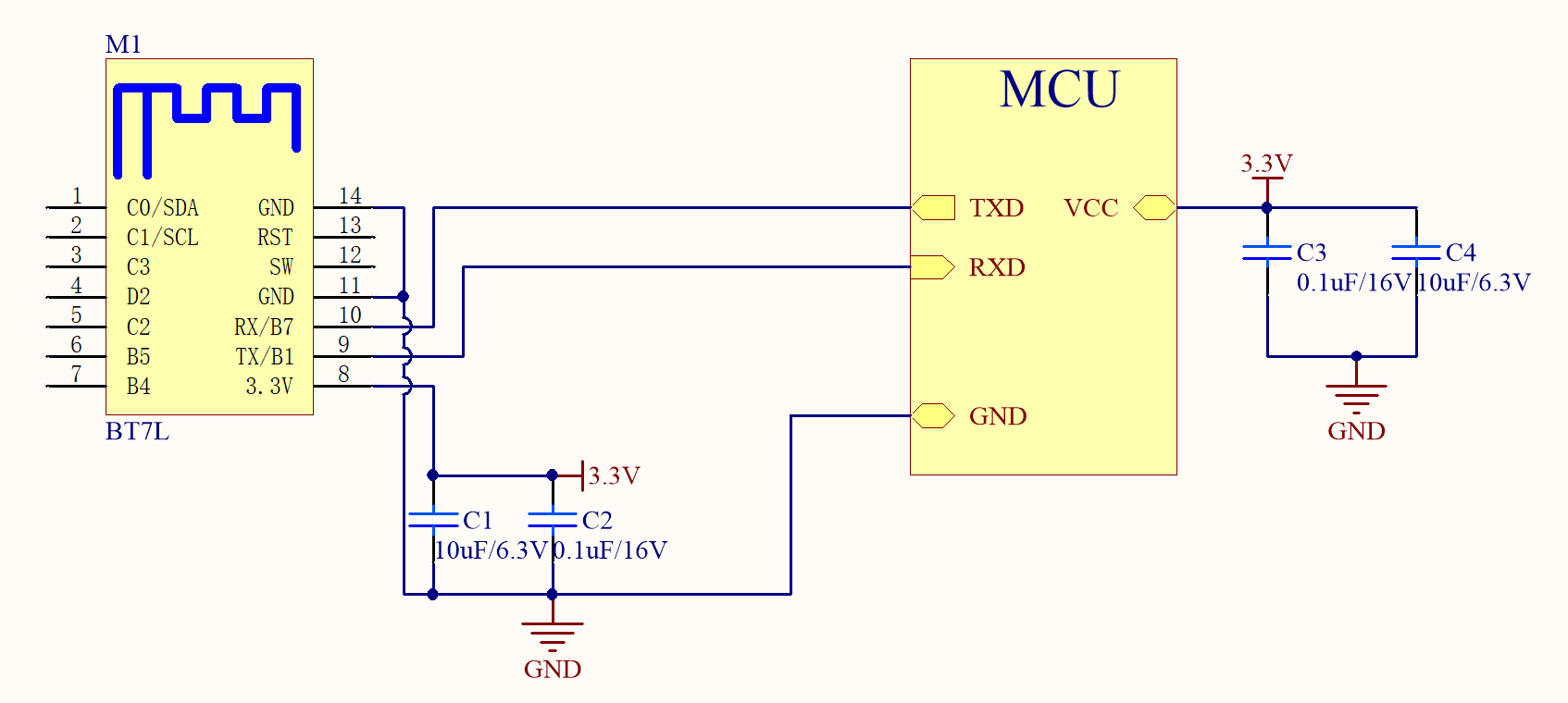
-
Connection between a module and a 5V MCU
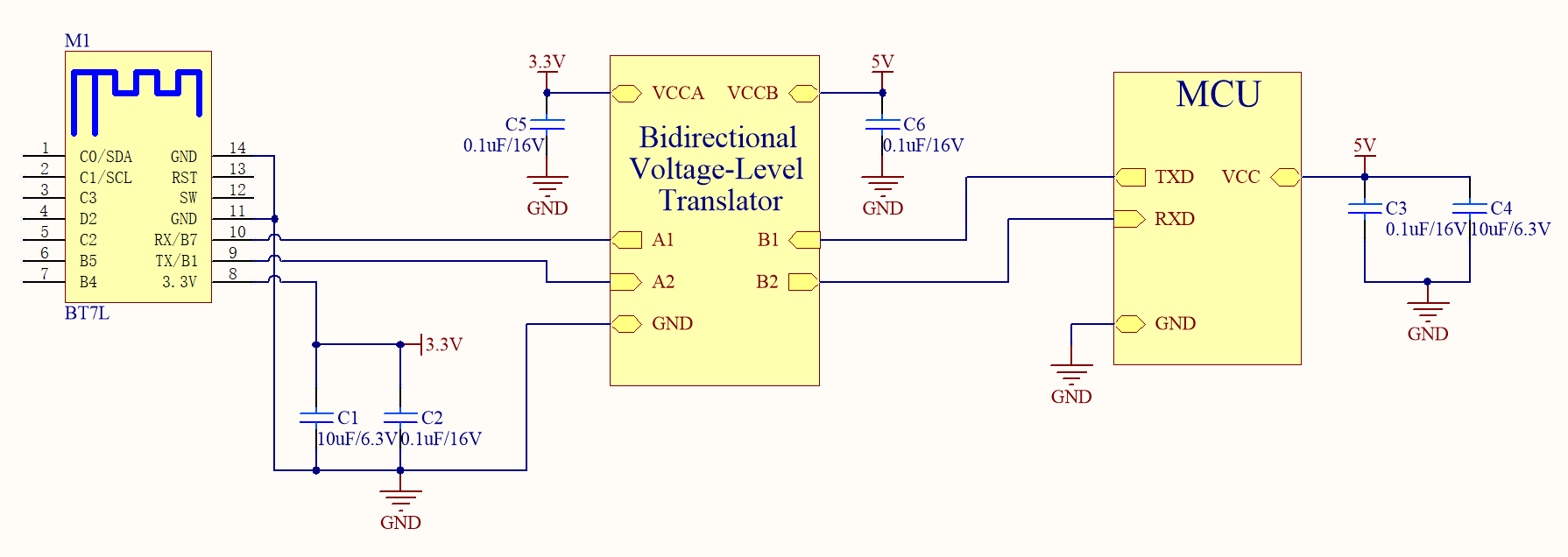
Low power solution
-
Connection between a module and a 3.3V MCU
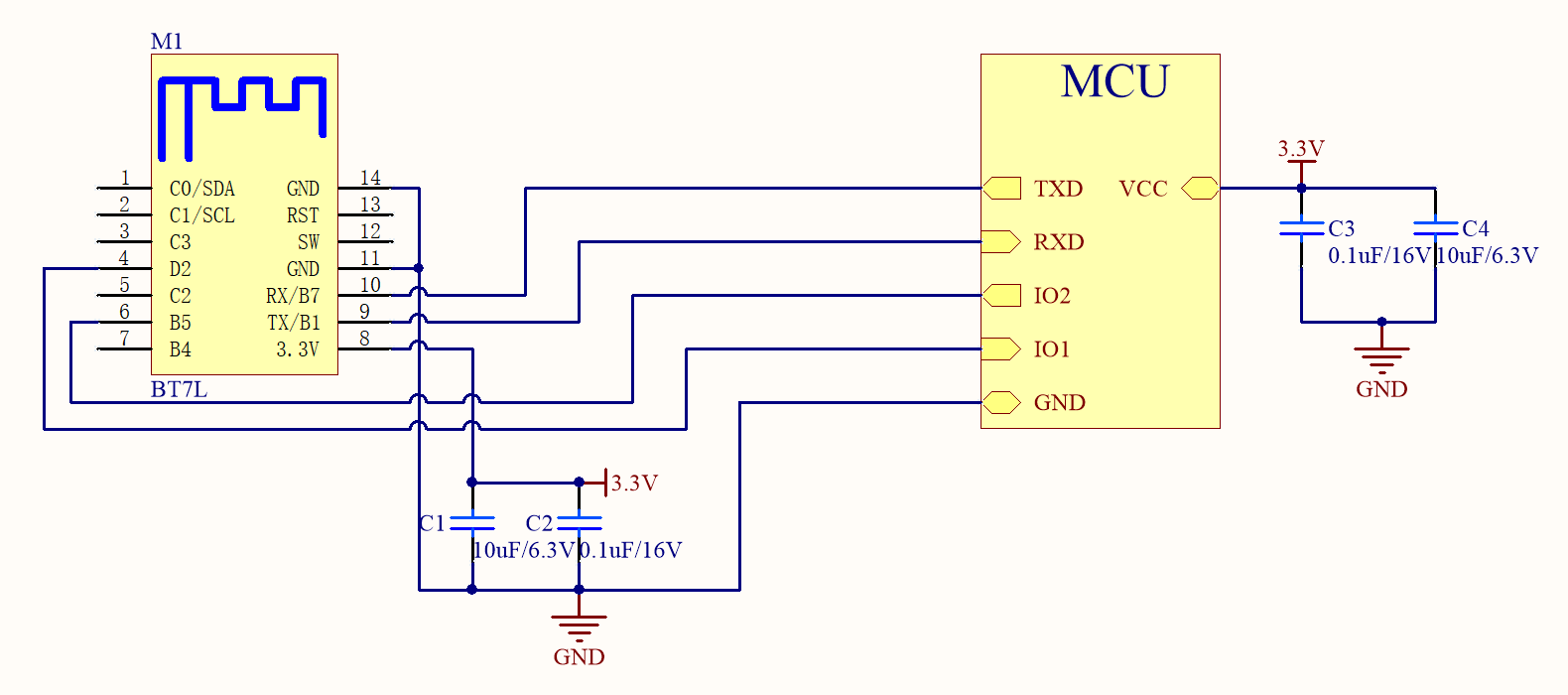
-
Connection between a module and a 5V MCU
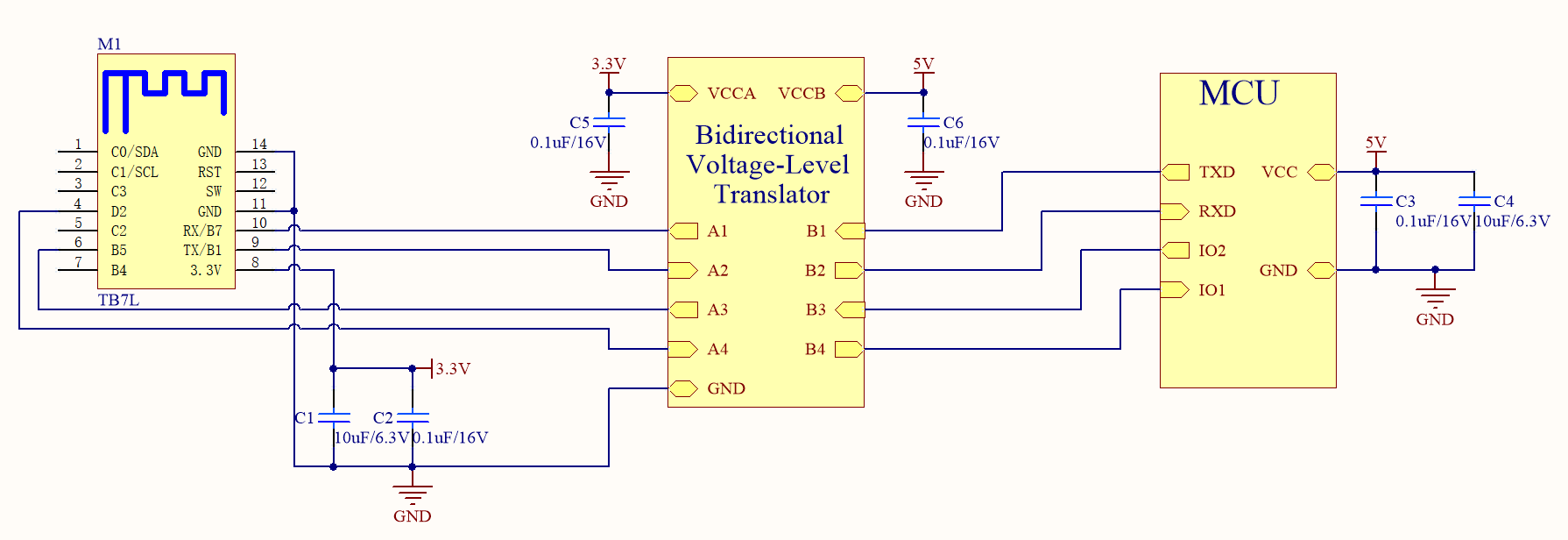
Level translator reference
-
N-channel MOSFET level translator
In the following circuit diagram, an N-channel MOSFET and a built-in body diode are used to implement two-way communication.
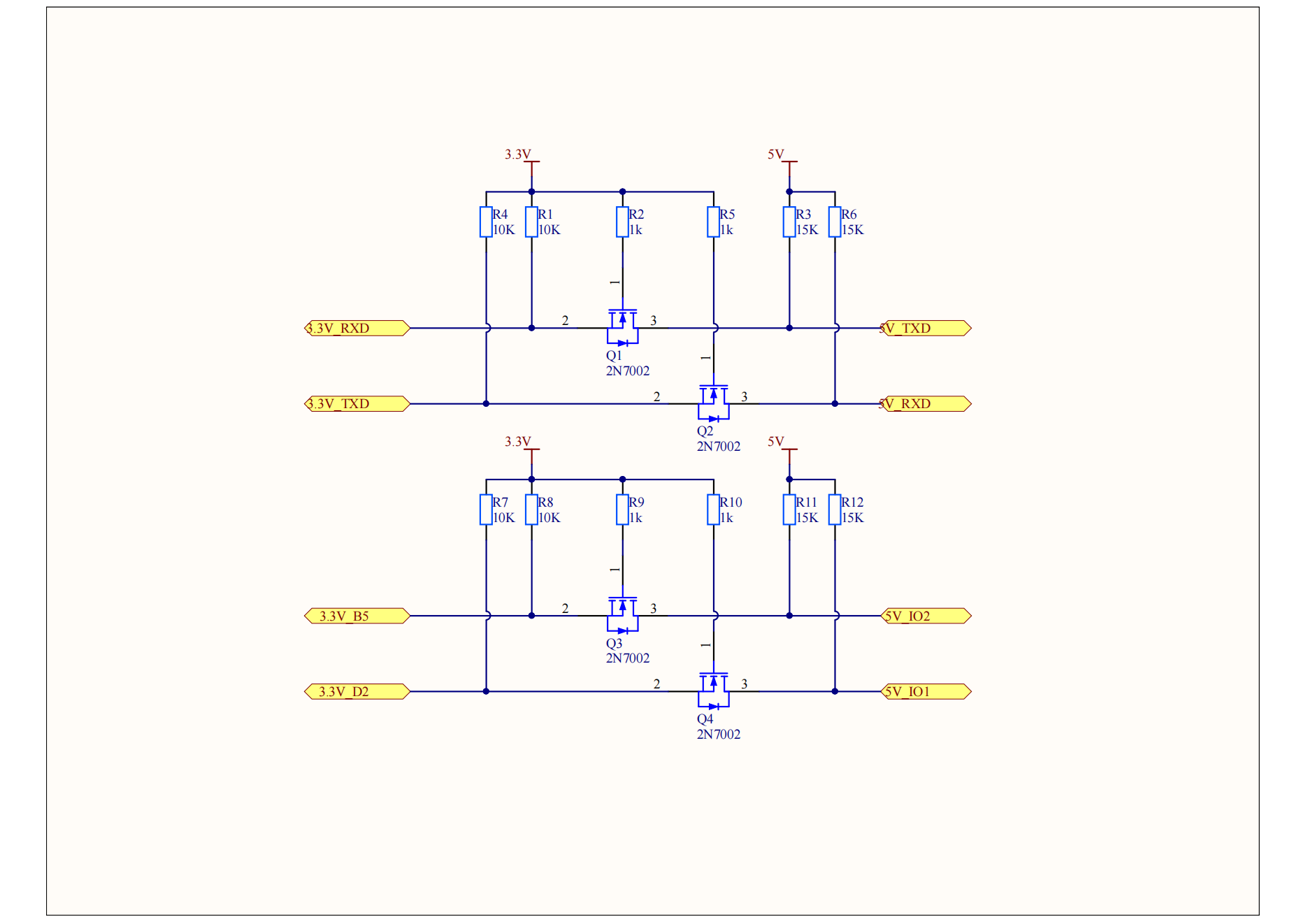
-
NPN triode level translator
In the following circuit diagram, an NPN triode is used to implement one-way communication.
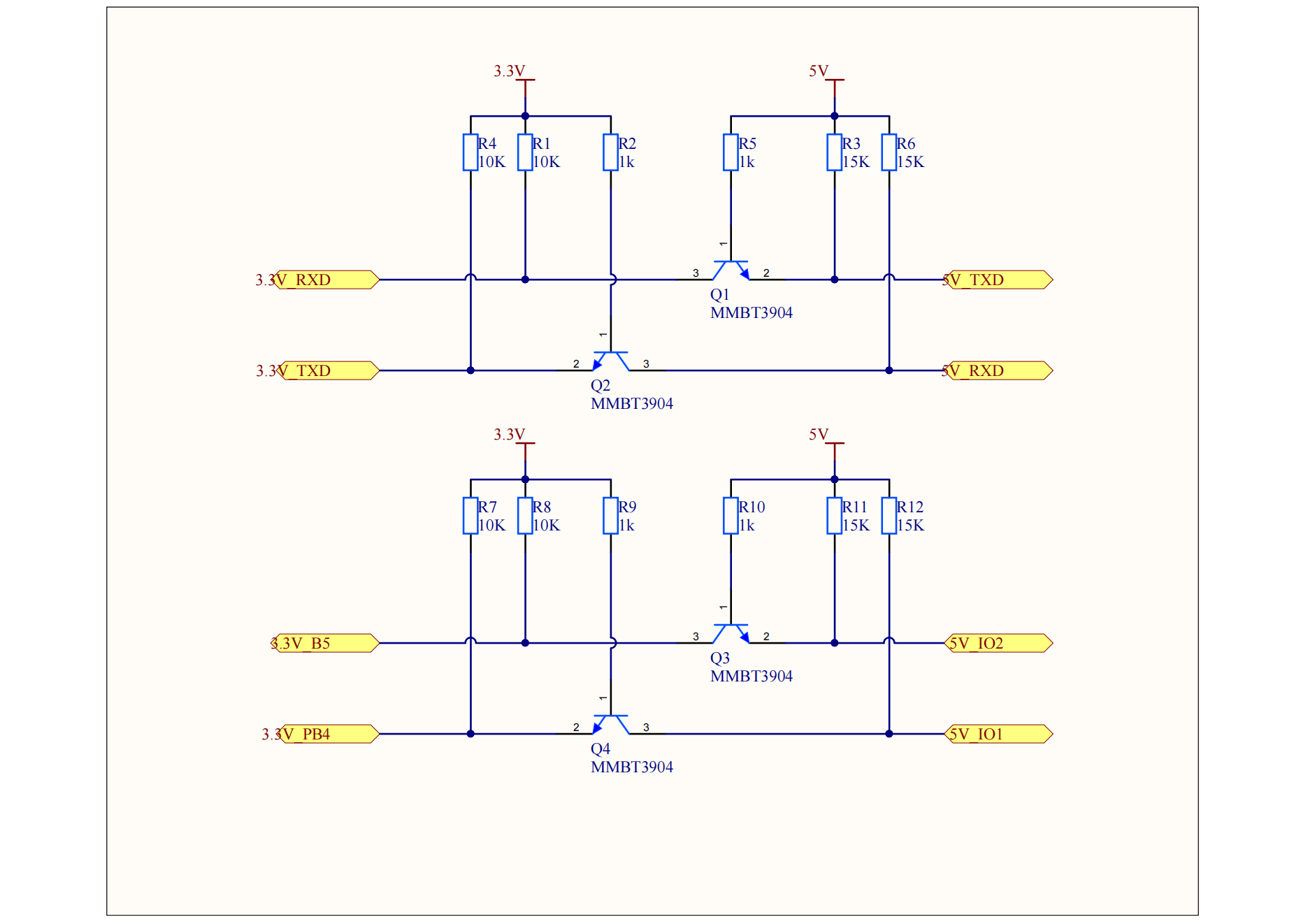
For more information, see Bluetooth Serial Communication Protocol.
Design specification
-
Power supply
- The supply current for 3.3V modules should be greater than 100 mA. The total capacity of the external filter capacitor should be greater than 10 μF.
- Place the filter capacitors of the power input pin near the power pin of the module.
-
Pins of the module
-
The module has a power-on-reset circuit. You can also use the GPIO on the MCU to control the module reset. Take care of the voltage level translation.
-
The MCU can pull down or up the low power pin on the module to make the module enter or exit the sleep mode. The configuration is shown below.
Low power pin Voltage level in low power Voltage level in standard power TL_B5 Low High -
The module can change the level of the wake-up pin for 200 milliseconds to wake up the MCU for serial data transmission. After that, the pin will go back to the default level. The configuration is shown below.
Wake-up pin Voltage level on transmitting Voltage level on idle TL_D2 High Low
-
-
Radio frequency
The distance between the antenna and other mental components should be at least 15 mm to provide the best radio performance. Make sure that the enclosure surrounding the antenna is not traced or filled with copper. Otherwise, the RF performance might be degraded. Principles in RF layout
-
Make sure that there is no substrate medium directly below or directly above the PCB antenna.
-
Make sure that the PCB antenna is away from the copper sheet to maximize the RF performance.


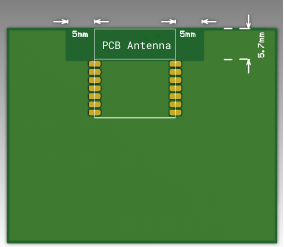
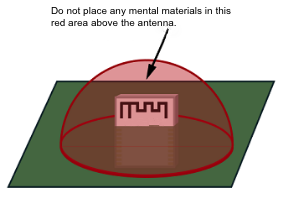
-
Is this page helpful?
YesFeedbackIs this page helpful?
YesFeedback





